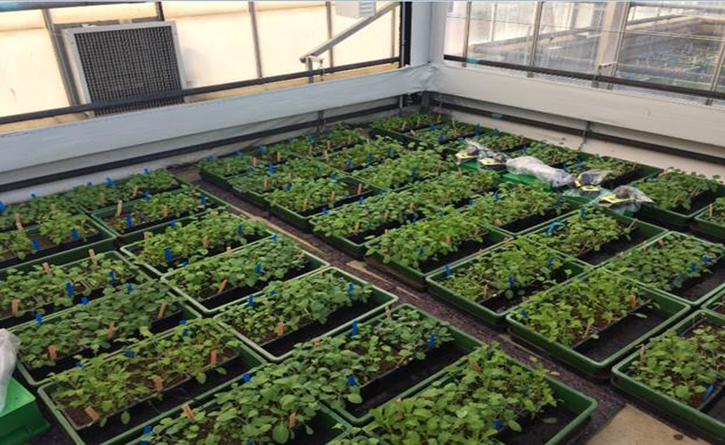- Home
- Knowledge library
- Clubroot management in oilseed rape: cropping factors
Clubroot management in oilseed rape: cropping factors
Careful design of the rotation is at the heart of integrated pest management (IPM) for clubroot. We outline five factors that affect clubroot risk.
Extend the rotation to reduce clubroot pressure
Clubroot resting spores can remain viable in the soil for up to 15 years, with a half-life of approximately 3.5 years. Consequently, the longer the break from susceptible crops, the greater the reduction of viable spores. In clubroot-affected land, extend the rotation to a break of at least four years between susceptible brassica crops.
In addition to oilseed rape (winter and spring), all vegetable brassica species are affected. Other susceptible broad-acre arable crops include turnip, swede, Brussels sprouts, cauliflower, calabrese and mustard. Numerous weed species, such as charlock and shepherd’s-purse, are also common hosts.
Learn to tell your charlock from your shepherd’s-purse
It is also important to avoid growing cover crop mixes that contain susceptible brassica hosts on infested land. Although agricultural radish is resistant to clubroot, the mechanism is the same as in oilseed rape. As there is limited evidence for reduced soil inoculum after growing radish, the guidance is not to grow it in heavily infested fields.
Discover the right cover crop for your field
Use clubroot resistant varieties judiciously
Some varieties of swede, vegetable brassica and oilseed rape are tolerant/resistant to clubroot. However, such varieties are not immune to attack, and small galls are likely to develop.
Based on a single dominant gene, the same resistance mechanism (termed ‘Mendel resistance’) is present in all resistant crop varieties. However, recent research shows there is a high pathotype diversity in the UK.
- The pathogen that causes clubroot has several strains
- The relative proportion of these strains varies from location to location
- Clubroot-resistant varieties are resistant to common clubroot strains
- Some strains of clubroot may overcome the resistance in these varieties
- Growing clubroot-resistant varieties repeatedly or in heavily infested soil will select for these more virulent strains, potentially causing the resistance genes to become ineffective
- Resistance-breaking strains are already present in some parts of the UK
As a rule of thumb, a resistant variety should have less than 30% infection, compared with a susceptible variety (volunteers and off-types should not be included in the observation).
Resistance breakdown is most likely to appear in patches. These patches can act as an early warning of changes in the pathogen population.
Where resistance breakdown is suspected, it is important to extend the rotation and avoid the repeated use of resistant varieties.
Use the Recommended Lists (RL) to identify oilseed rape varieties for clubroot-infected land
Across Europe, resistant oilseed rape varieties account for about 5% of seed sales. The purchase of certified seed ensures that susceptible plant numbers are minimised in a seed batch. Resistant varieties should not be home-saved for seed.
Avoid early sowing on infested sites
Infection is most likely to occur in warm, wet soils (optimum temperature 16–25°C), which help zoospores to disperse through soil water.
Typically, winter-grown crops are most susceptible to infection from August to mid-September. Crops are most vulnerable at the seedling growth stage (one to two leaves unfolded). Delayed drilling minimises the potential window of infection and helps the crop to avoid clubroot.
Fungicides
Fungicide and biocontrol options are not available for clubroot control. Calcium cyanamide, which is registered for use as a fertiliser, is reported to have some incidental effects on clubroot.
Useful links

A glasshouse bioassay to detect clubroot infected soil
Clubroot resistance in action
Some winter oilseed rape varieties on the AHDB Recommended Lists (RL) have specific recommendation for growing on land infected with common strains of clubroot. Filmed in May 2021, this video of an RL trial site shows the clear benefits associated with clubroot-resistant varieties.
‘Unexpected’ clubroot: lessons from an RL trial (March 2022)
Topics:
Sectors:
Tags:

